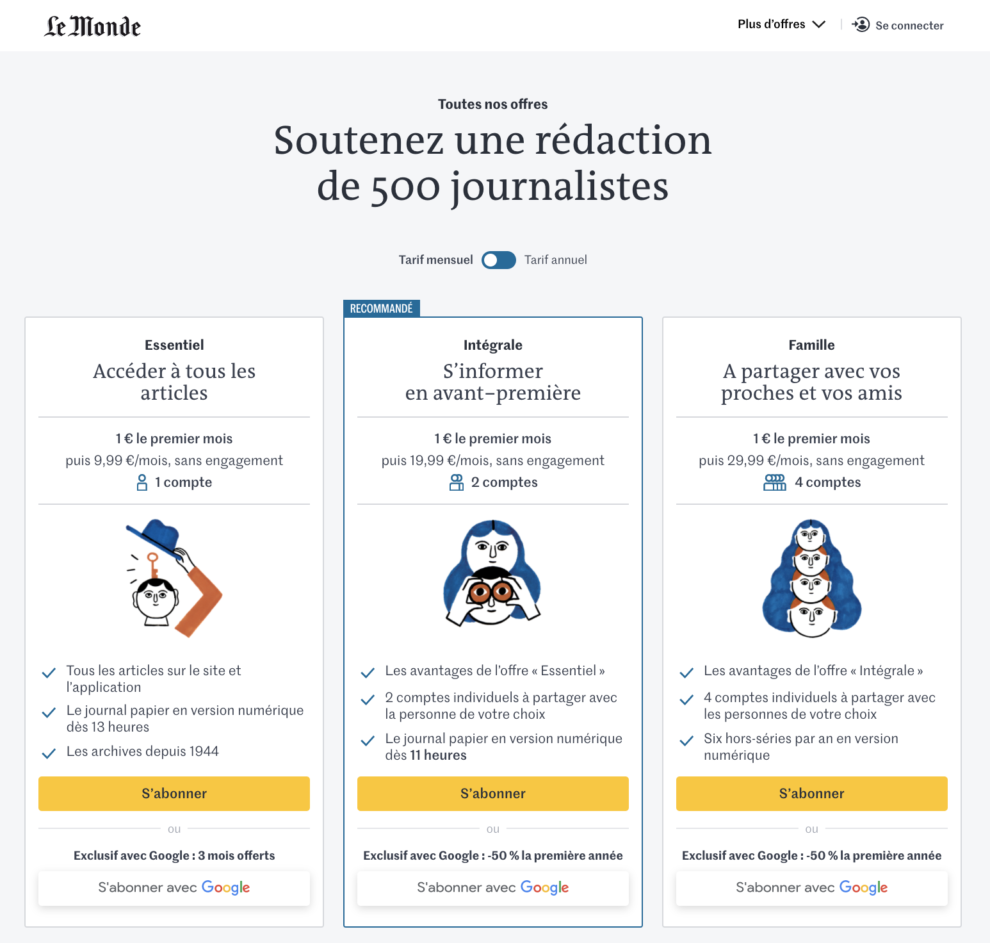Blog
3 publishers that saw business impact with Digital News Innovation projects
With the recent release of the Google News Initiative Impact Report, including results from the DNI fund in Europe, we are exploring this week, 3 news innovation projects where publishers already reported positive business impact.
We hope that seeing how other publishers have successfully innovated can serve as inspiration for your 2021 planning. If interested to have a more in depth digital strategy discussion, our team offers a limited number of calls for our Future of News community — apply today!
Gamifying news at Russmedia brings 10x growth in registered readers
In Austria, the team at Vorarlberg Online (part of Russmedia) was looking for a way to better reward their loyal readers and they looked for inspiration in the gaming industry. With the creation of “Ländlepunkte“, readers are rewarded for their engagement with points that can be redeemed for various prizes, concert tickets, and discount vouchers.
Readers are first encouraged to sign in so that they can start to gather points. Then they earn points by taking actions such as reading, sharing articles, or writing comments. Interestingly, to date 65% of points have been used to purchase Vorarlberg Online’s own product.
The focus on encouraging readers to become registered users has resulted in a 10x growth in the number of logged in users (from 3% to 30%). We have already seen the importance of registered users for converting new subscribers also at publishers such as The New York Times and The Telegraph.
It’s been a 10-fold growth project for us and there are not a lot of those happening in our industry.
Gerold Riedmann, Russmedia Digital CEO
As part of the Google funding agreement, this technology is not restricted to use by only Vorarlberg Online. Today this loyalty programme is being used by IKEA in Switzerland and various supermarkets. There are even plans to turn Ländlepunkte into a currency that can be used at local businesses.
Personalising news distribution at The Times lowers churn by 49%
The innovation team at Twipe in collaboration with publishers has been fortunate to receive Google funding three times already. One of the projects is JAMES, a co-development project with The Times in London focusing on personalised distribution of content via newsletters.
While there has been a lot of work on personalisation algorithms outside of the news industry, with catalog-based companies such as Spotify and Amazon leading the charge, there has long been a concern that personalising news will lead to filter bubbles. That’s one of the aspects explored within JAMES: how can the distribution of news be personalised so readers can be exposed to the full breadth of journalism produced daily by the editorial teams of The Times. During this one-year project, JAMES served over 100,000 subscribers with automated, individualised newsletters, using algorithms that optimised for match to individual interests as well as trending content. This helped The Times reduce churn by 49% for subscribers who received a daily automated personalised newsletter, particularly among the low and medium engaged readers. In the spirit of knowledge sharing fostered by Google’s innovation funding, at the end of the project in 2019, all the findings were made available in a free report.
Throughout 2020, JAMES was rolled out to new publishers via a Launch Partner Programme. The first launch partner was the Daily Mail in the UK where JAMES is already used to build daily automated newsletters for more than 60,000 readers of the Mail+ website and the Mail Digital Edition. In the second round, we partnered with NRC in the Netherlands where more than 40,000 subscribers are now exposed every day to JAMES emails that use different algorithms. New experiments are in the making and this quarter a final 2020 launch partner will be selected. To have your newsroom join as a launch partner, schedule an intro call today.
Differentiated plans enable 40% subscribers growth at Le Monde
In France, Le Monde received funding from Google to create a three-tier subscription model as commonly seen at Netflix. In the essential offer, subscribers have full access to the website and applications, with the normal ePaper publication time of 1 PM as Le Monde is an afternoon newspaper. For double the price, the next subscription offer includes 2 accounts who can read the edition and early access to the ePaper as of 11 AM. Finally, the family subscription offer has 4 accounts, plus an additional 6 digital supplements throughout the year.
This subscription update has paid off as Le Monde has grown its digital subscribers by 40% since the beginning of 2020. Encouraging users to share subscriptions by upgrading to multiple accounts has been one of the key growth drivers.
Another key driver is the differentiated digital edition offering and at Twipe we are proud to have been part of this collaboration to offer access to Le Monde’s ePaper on our platform.
For other publishers looking to differentiate their subscription offerings, the digital edition, be it in the form of ePaper Replica or a digital-first NextGen edition, offer a great opportunity. It is a perfect example of taking something with a long history (the first newspaper was printed in 1605) and reinventing it for today’s world. This is the ethos of the Day 1 philosophy, which we will further explore in the next event in our Future of News series on December 1st.
Other Blog Posts

Stay on top of the game
Subscribe to Twipe’s weekly newsletter to receive industry insights, case studies, and event invitations.
"(Required)" indicates required fields


